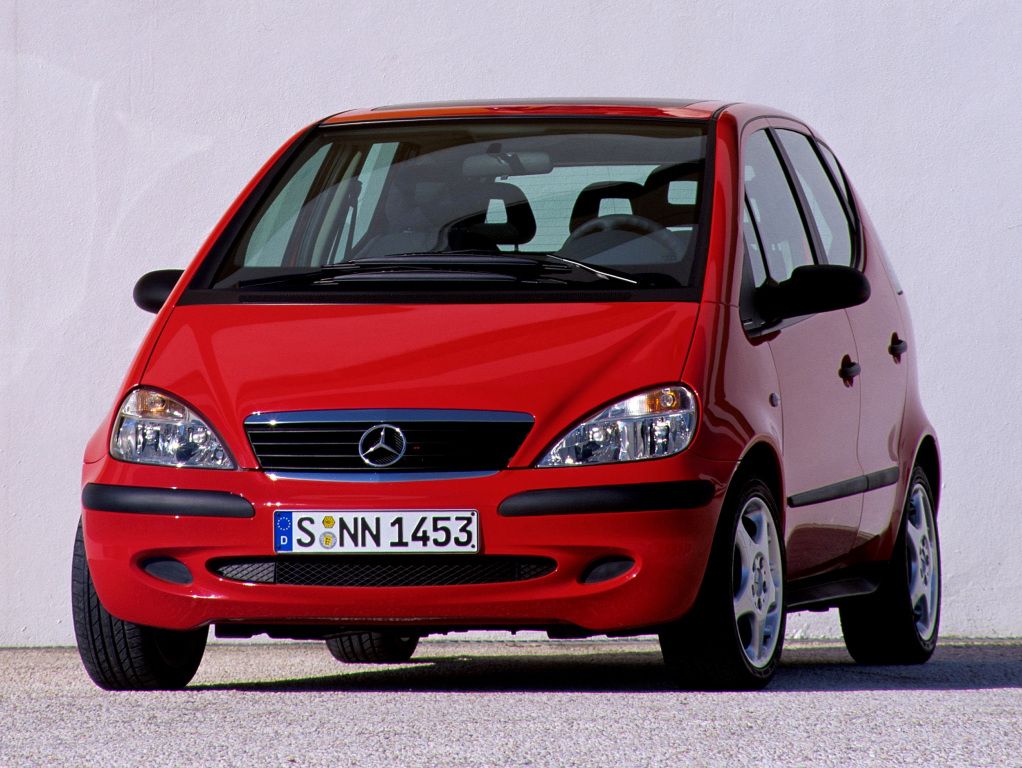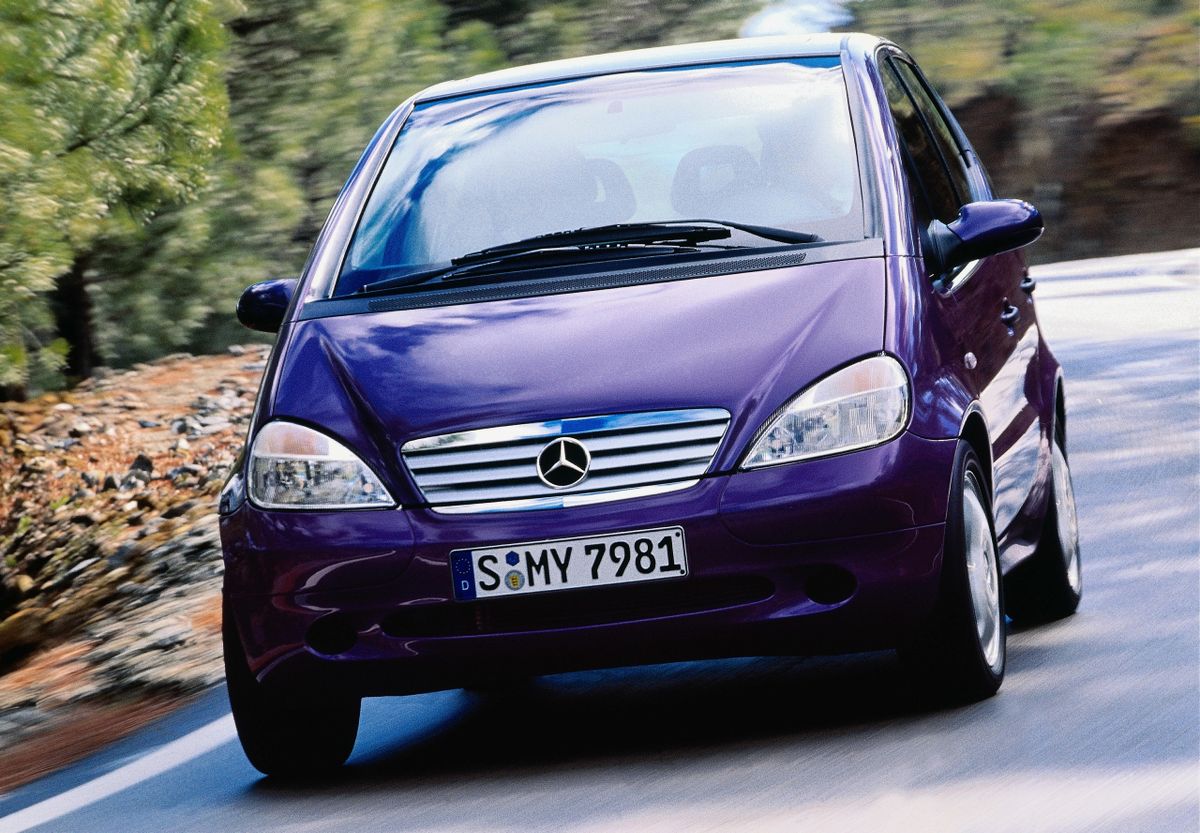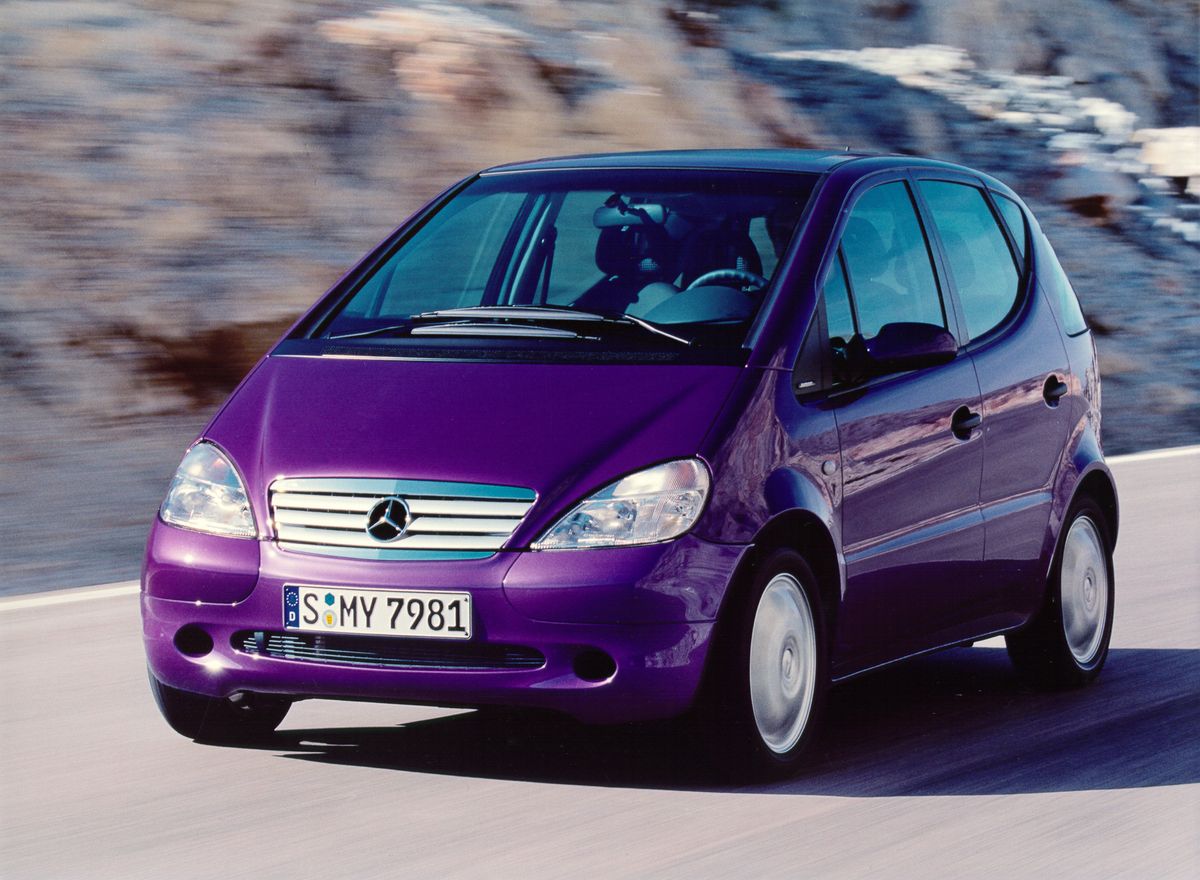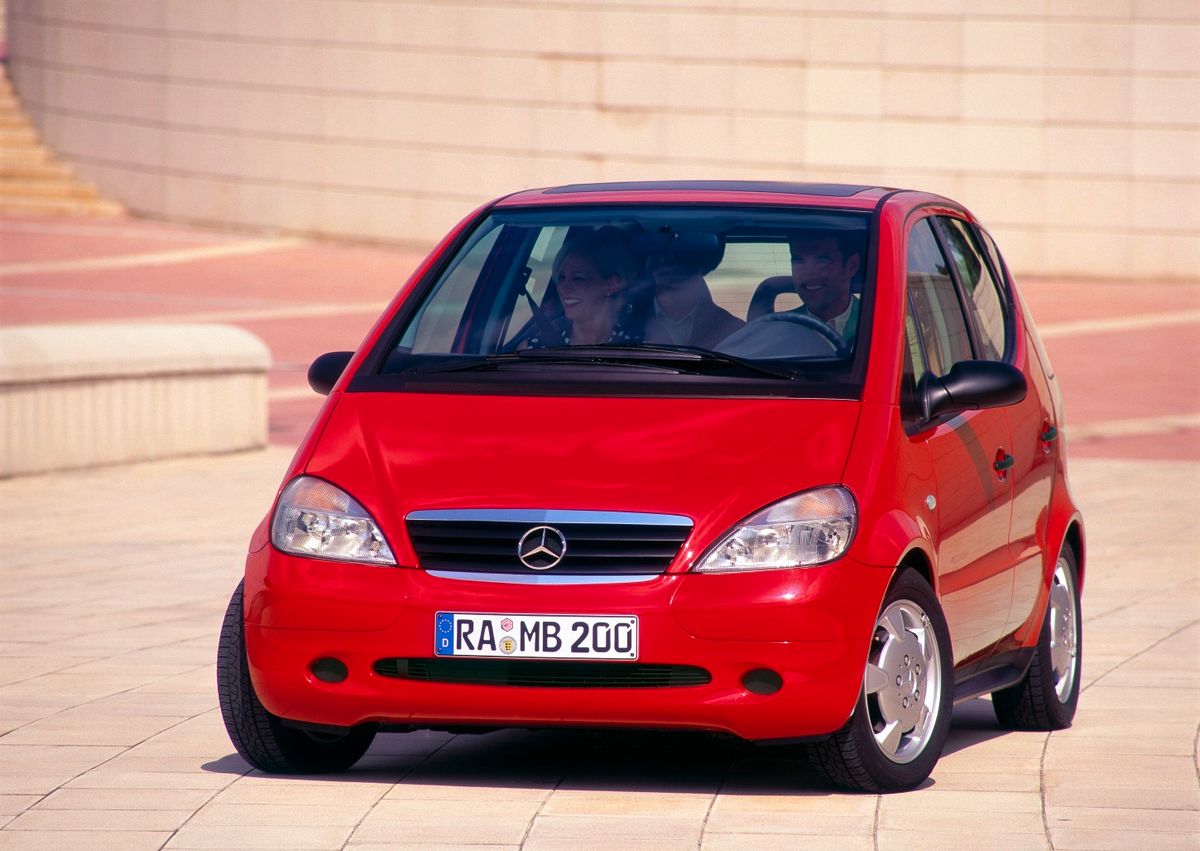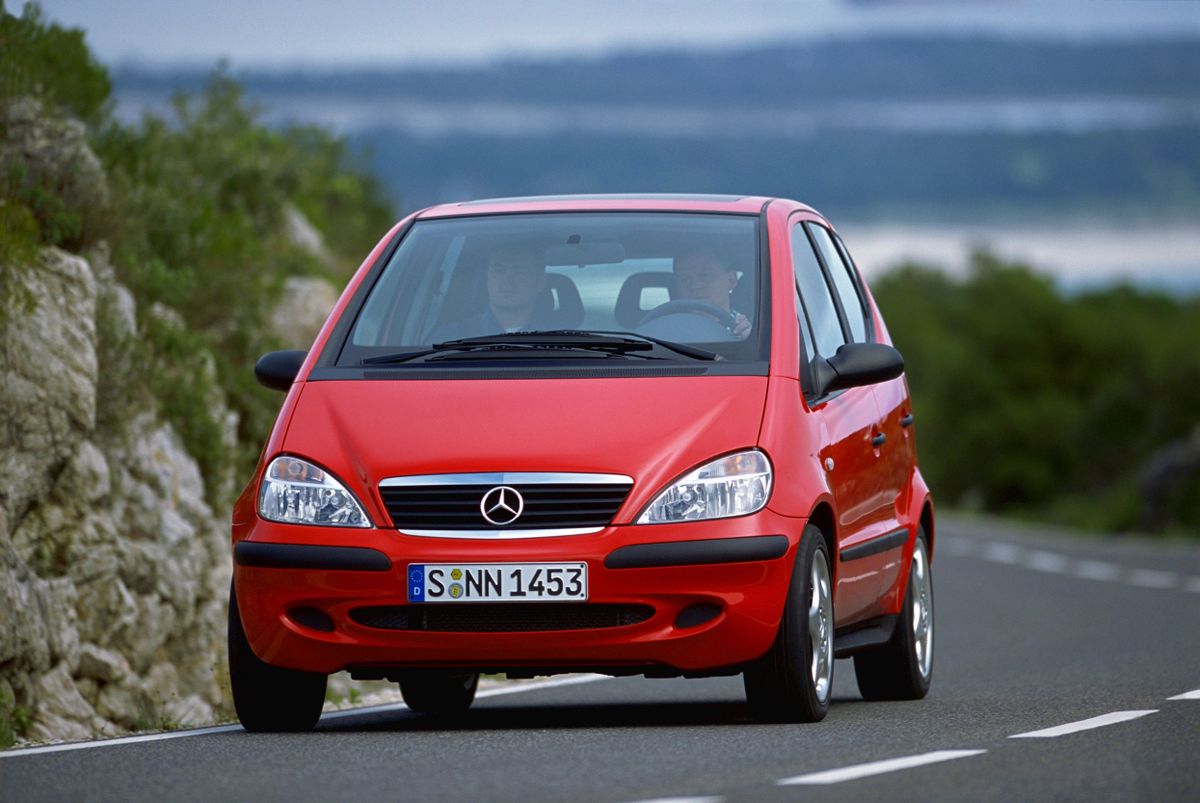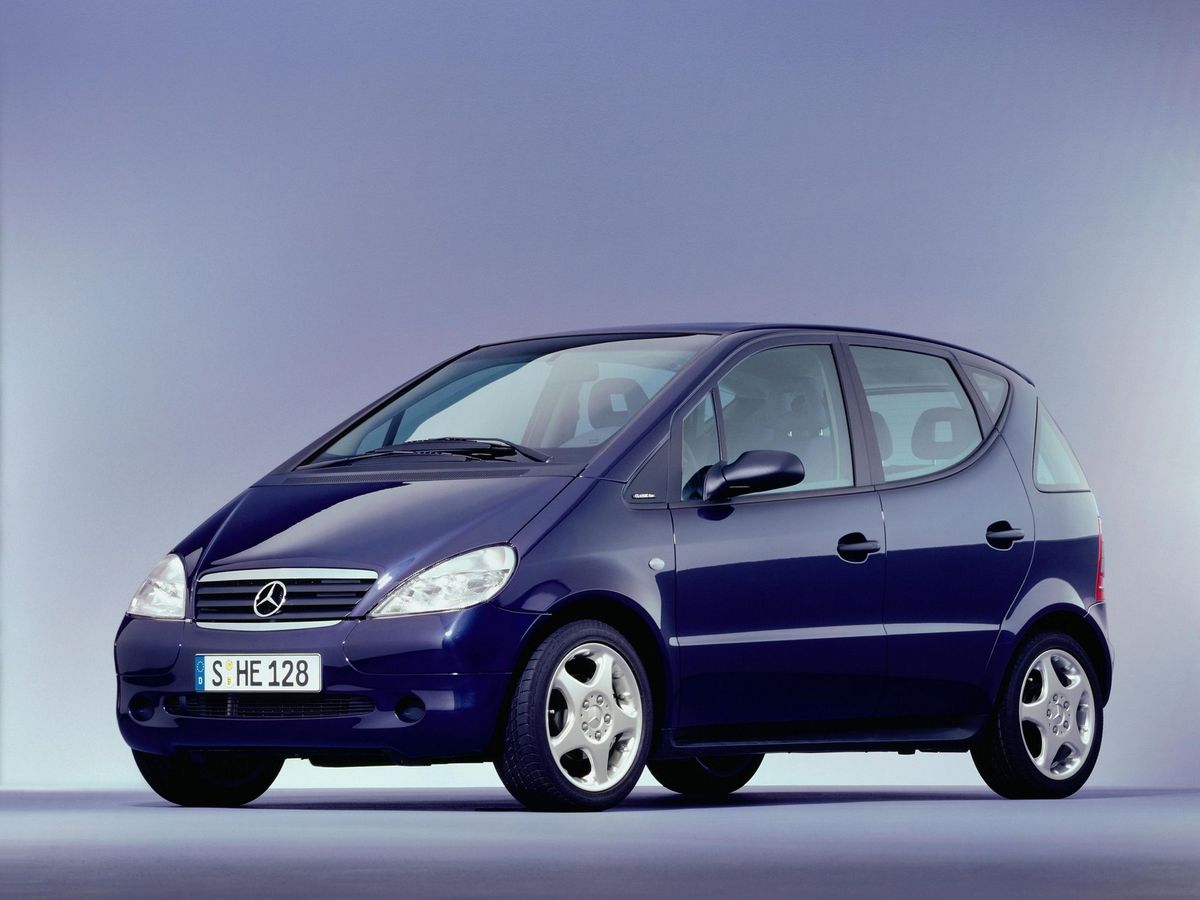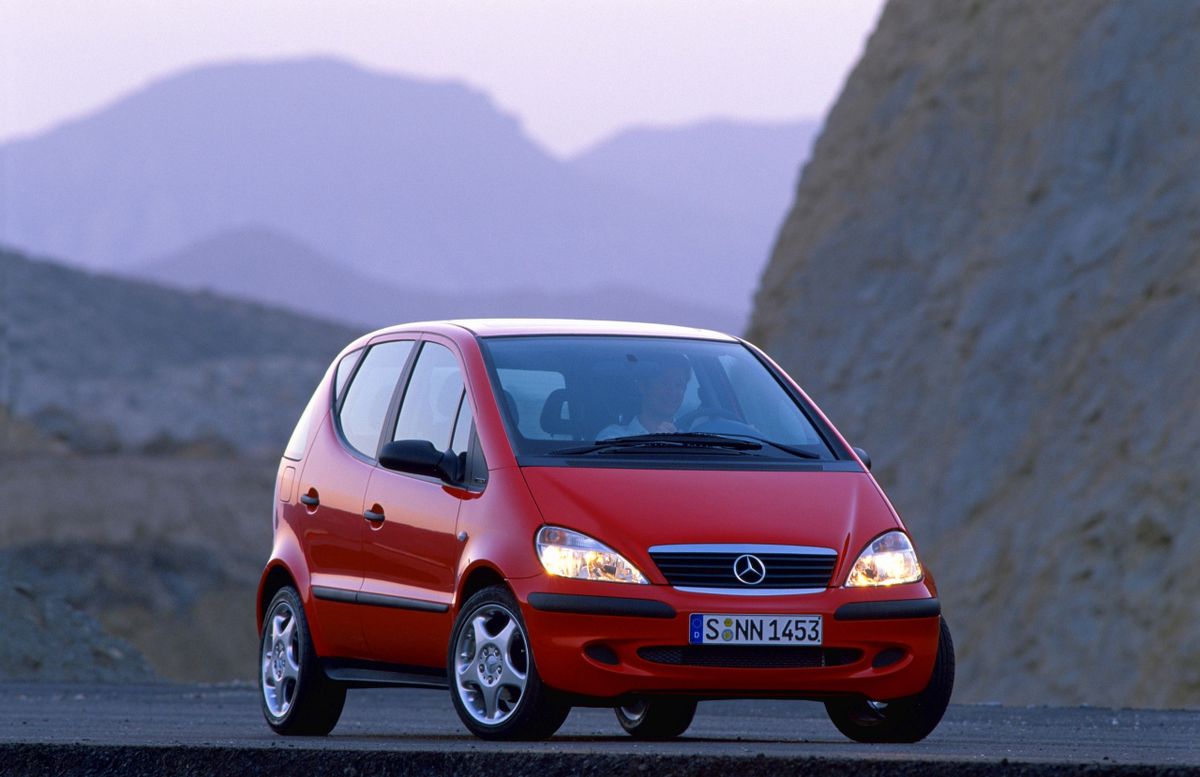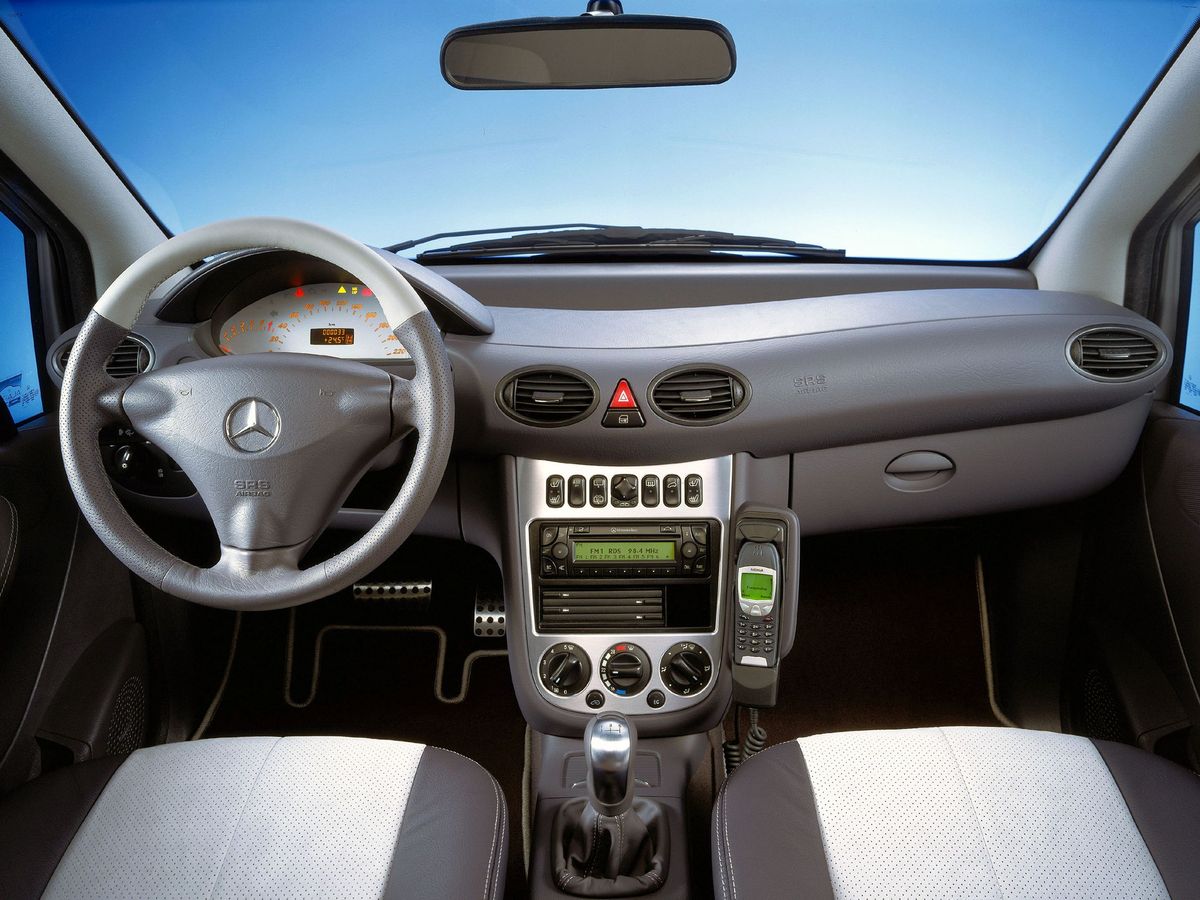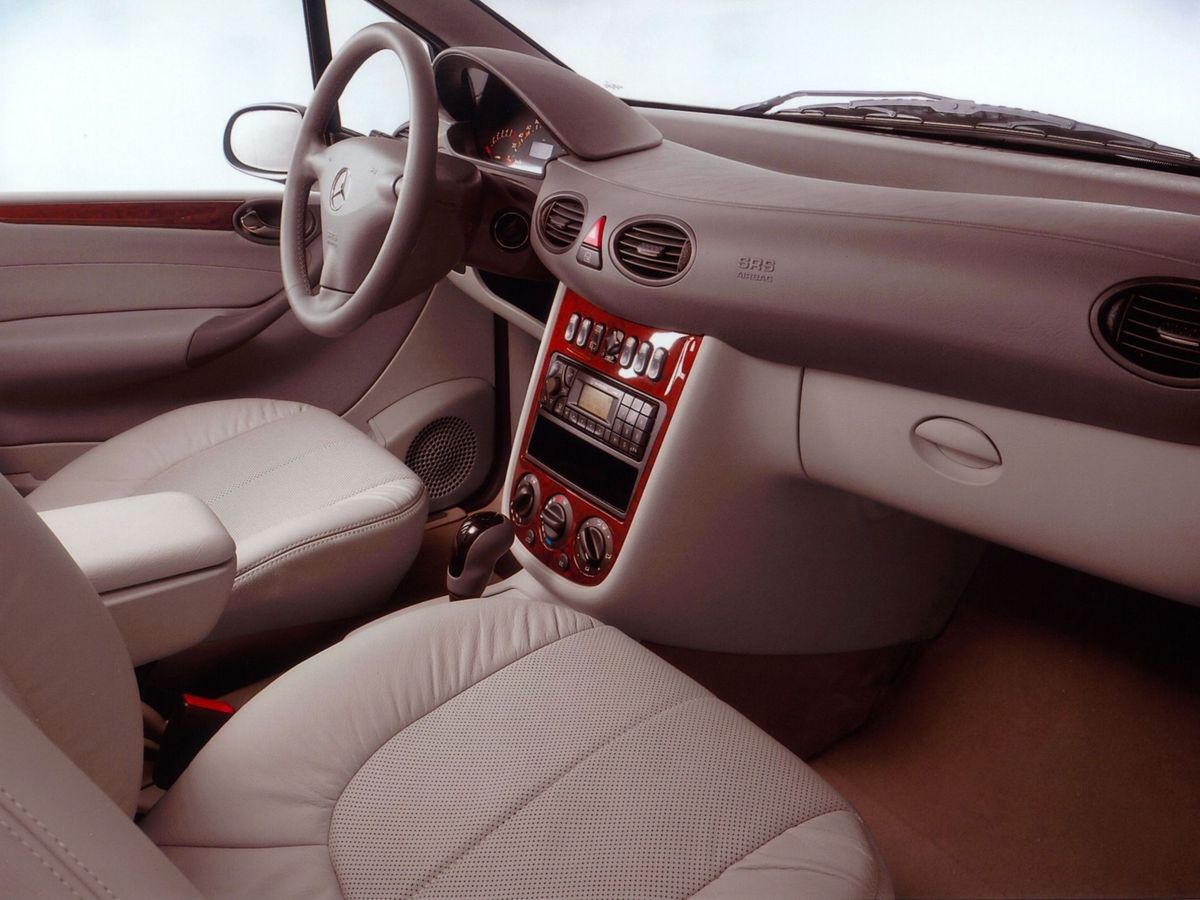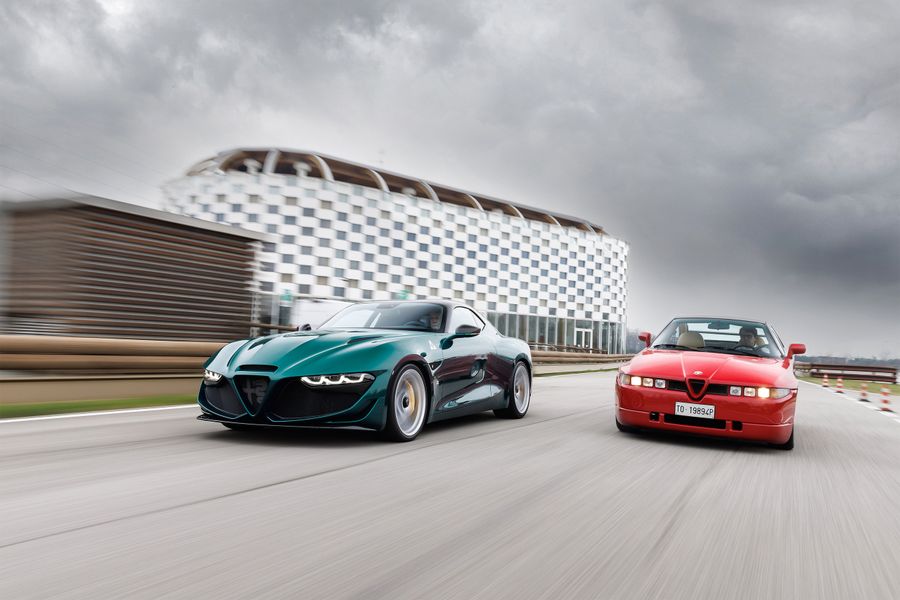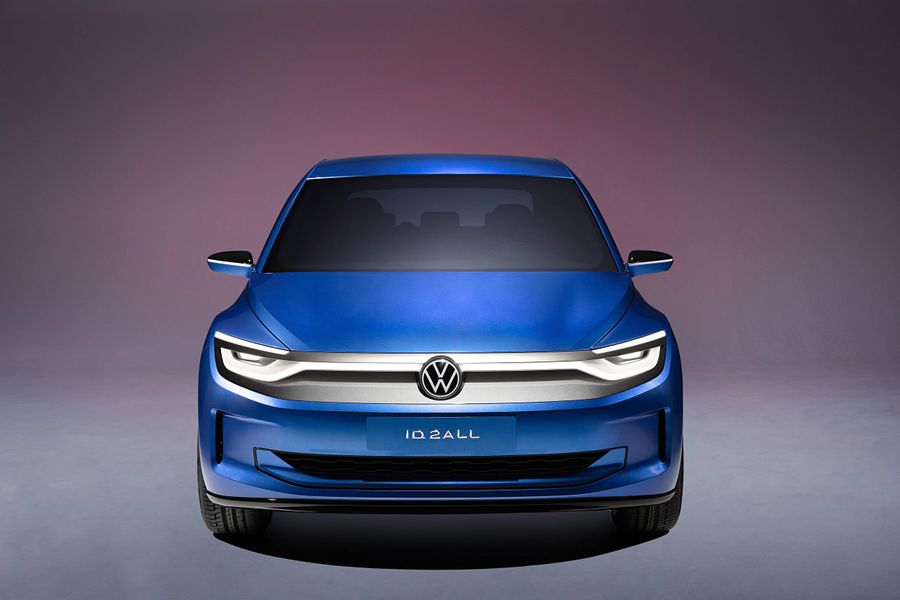
Incomparable Mercedes W168
Mercedes-Benz representatives arrived at the 1993 International Motor Show in Frankfurt with a revolutionary slogan: ‘Automotive world needs new ideas’. The Vision A 93 became the embodiment of this slogan. It was one of the first A-Class cars, which immediately attracted the world’s attention with its incomparable concept.
Sandwich of ideas
In terms of interior volume, that short (3.35 m) front-wheel drive subcompact car was on a par with the full-size middle-class sedans. At the same time, the Vision A 93 could have many versions, starting from a comfortable four-seater car to an estate with a 1,000-liter trunk. The designers managed to achieve such results using a revolutionary sandwich floor concept, in which the engine and gearbox were located under the car. Apart from making the small car more spacious, the sandwich managed to increase its safety level. In case of a front collision, the units and parts of the Vision A 93 went down, under the floor, and did not get into the passenger compartment.
Automotive specialists and car enthusiasts greatly appreciated the new creation of the obscure German genius. So, one could say that September 1993 became the date of the emergence of an entirely new class of vehicles. Stepping away from tradition, Mercedes-Benz made every step in the creation of the volumetric compact car available to the general public. Ultimately, the decision on whether SUCH non-traditional Mercedes was to be produced was made by car enthusiasts at the Motor Show in Frankfurt. They were the ones who insisted on the appearance of this car. Mercedes engineers started modifying the Vision A 93. Intermediate versions of the Vision A 93 were unveiled at the Geneva Motor Show in 1994, at the Frankfurt Motor Show in 1995, while the world premiere of the production version (and the entire A-Class) took place at the Geneva Motor Show in 1997. It was only the beginning of the formation of A-Class…
Interior
The design of the first production representative of the A-Class underwent around twenty changes compared to the concept. The interior became a bit longer and more spacious, and the adaptability of the compact car was spectacular. The 5-seater car could be transformed into the 4-, 3-, 2-seater and even into a one-seater version. The buyers could choose from 72 seat options! Depending on the quantity and position of the passenger seats, the trunk volume reached 1,740 liters! After loading the car with so much baggage, it was time to think about how to unload it. For this purpose the engineers designed a large tailgate and the low threshold of the trunk compartment for the Vision A 93. From the start of production buyers could choose between the following trim levels:
- Classic (standard).
- Elegance included standard and additional options: alloy rims, chrome inserts on the door handles, wooden elements in the passenger compartment, two-colored taillights.
- Avantgarde included alloy rims + wide tires, monochrome taillights, carbon trim elements.
Safety
In terms of passive safety, the A-Class was on a par with the top-end E-Class vehicles, which was primarily due to the presence of the sandwich floor. On the other hand, even the entry-level trim of the Mercedes W168 featured short crumple zones adapted to the A-Class concept. At the front of the frame rails, there was an aluminum module with two side impact boxes which could be quickly replaced in the event of an incident. For the first time in large-scale production Mercedes-Benz used plastics for the construction of the front fenders. If the collision was not very strong, the plastic fender quickly returned to its original shape and did not even require painting.
Engines and transmission
Original space-related solutions and attention to safety resulted in the creation of the next generation of four cylinder block engine. The Mercedes W168 featured two petrol engines from the M 166 series and two turbo diesel engines from the OM 668 series a little later. All of these engines were 25% lighter than the standard engines on which they were based. The 1.4-liter and 1.6-liter petrol engines, installed on the first models in the range, produced 82 hp and 102 hp, respectively. The 60 hp to 90 hp diesel engines were fitted with the advanced Common Rail Electronically Controlled (CDI) direct injection system. The Common Rail system was developed by Mercedes‑Benz in cooperation with Bosch and was first used in the series production of the A-Class.
In addition, the first generation of the A-Class was equipped with the ASSYST active maintenance system which constantly analyzed the oil quality in the engine and made it possible to determine the maintenance intervals of all the engines of the A-Class depending on the conditions of their use.
The transmission was developed from scratch in accordance with the new body and safety design. Engineers implemented a well-performing 32 kg manual gearbox that became the lightest unit in the compact car class. The electronically controlled 5-speed automatic transmission became the lightest and shortest but remained functional. By the way, as an alternative to the automatic transmission the manufacturer offered a semi-automatic transmission without a clutch pedal and with manual gear shifting.
In 1998, the manufacturer introduced the A 170 CDI and A 160 CDI models with powerful diesel engines, manual gearbox and larger tires. By demonstrating the flexibility of the A-Class design, Mercedes‑Benz surprised the public with the dual engine version called the A 190 Twin. The first engine was installed in its usual place under the hood, whereas the second was transferred to the rear, under the floor, setting the rear axle in motion. Smooth operation was provided by the automatic clutch which was series-produced and available as an additional option to regular car enthusiasts. The engine system ensured acceleration to 100 km/h in 5.7 seconds, and the top speed reached 230 km/h. In fact, the speed was even higher, but the engineers lowered it. It is obvious that the vehicle was greatly modified in order to match such power. The automaker widened the fenders and installed the 18-inch wide-profile tires, sporty disc brakes and the low rear spoiler.
Impact of the moose test on the A-Class
The number of innovations developed by engineers when creating the A-Class was so great that it was simply impossible to lose sight of certain things. And it is exactly what happened, they overlooked the moose. As the story tells, on October 21, 1997, the 168W turned over during the driving exam in Sweden when trying to go around a major obstacle at high speed. The moose test failure was a serious blow to the reputation of the A-Class, especially if we remember that the safety lied at the root of the concept itself.
Shortly before the moose test epic failure in Sweden, the A-Class car won the Golden Steering Wheel by the Bild Am Sonntag, for quality and safety.
First, Mercedes-Benz refused to recognize defective design, but later the company took a radical step by withdrawing the models sold and suspending sales of new ones. Within three months, the developers worked on the safety level of the A-Class. The car acquired new stabilizers, reconfigured shock absorbers, a slightly lower body and wider tires. The standard equipment of the A-Class included an electronic stabilization program (ESP), an anti-slip regulation (ASR) and a brake assist (BAS). Engineers surpassed themselves. The A-Class could now cope with such critical road situations that no other car in this market segment could cope with.
The final professional test of the new system was conducted by Rauno Aaltonen, winner of the European Rally Championship, who repeatedly and successfully swerved around numerous hypothetical ‘moose’ at all speeds. In early February 1998, modified options began to enter the European dealerships. This version, heavily modified in terms of safety, could be considered the first true representative of the Mercedes‑Benz A-Class. After removing the dangerous defects, the Mercedes W168 got the final look and did not undergo any further major modifications.
Restyling
Nevertheless, in 2001, the A-Class underwent an impressive restyling, after which about 980 changes were made to the design of the W168. All of those changes deepened and expanded the original concept of the car.
The Mercedes-Benz V168 with a 170 mm longer wheelbase (2,593 mm) became the major model of the restyled version. Those additional millimeters made the interior even more spacious. The A-Class with a longer wheelbase offered passengers the comfort never seen in compact cars: +170 mm of knee room and +945 mm between passengers. In terms of comfort, the compact car actually surpassed many luxury cars. In addition, with the rear seats folded down, the trunk volume increased by another 80 liters. The interior of the restyled was also modified. Thus, the engineers changed the dashboard. The upper part of the center console became wider allowing the driver and front passenger to see the controls very well. The frequently used buttons and radio were moved to the top of the center console, while the heating and ventilation slide controls were moved to the bottom.
The restyled version of the Mercedes W168 became the first compact car to feature the advanced humidity responsive air conditioning system. The longer version came with two types of advanced turbocharged diesel engines featuring Common Rail technology. The A 160 CDI four-cylinder engine produced 75 hp against 60 hp of the version prior to the restyling. The power of the A 170 CDI engine increased from 90 hp to 95 hp. The longer version’s safety system was supplemented by a new type of hydraulic brake assist ensuring maximum braking pressure and reducing the stopping distance as much as possible during an accident.
In terms of comfort, the compact car actually surpassed many luxury cars.
Mercedes-Benz used the longer version as the basis for the Taxi version with additional options for taxi cars: the center console had a niche for the installation of the two-way radio, the taximeter was above the rear-view mirror, and the taxi sign holder on the roof was part of the basic trim level. In addition, the manufacturer provided two child seats, an additional drawer under the driver’s seat and the speaker system.
The next step in the restyling was the A 210 EVOLUTION version, the top-end model of the Mercedes W168 which was available with a short and longer wheelbase. The A 210 EVOLUTION version was distinguished by the AMG body design, 17-inch alloy wheels and luxury interior. However, the key advantage of the top-end version was the exclusive 140 hp engine, which could accelerate from 0 to 100 km/h in 8.2 seconds. Its maximum speed reached 203 km/h. At the same time, petrol consumption did not exceed 7.9 l/100 km. The car was equipped with the sports suspension, high performance front and rear disc brakes and other advanced features which made it quite dynamic on the road.
By May 2004, the manufacturer produced nearly 1.1 million W168 cars, including 882,661 standard versions and 204,212 with extended wheelbase. The Mercedes W168 was manufactured at the factory in Brazil until 2005.
Interesting facts
Women bought more than 40% of the A-Class W168 cars.
Eco-friendly engines have been tested on the Vision A 93 since 1997. The result of these tests is the compact electric EQA unveiled in 2017. However, the manufacturer has not launched its series production.
In November 1998, the Öko-Trend Ecological Research Institute in Wuppertal called the A 160 CDI ‘the greenest car in Germany’. It was the first time that the title was won by a middle-class car instead of a mini-car.
In 1994, a modified concept of the first A-class called ‘Studie A’ was recognized by Motor Week as the ‘Best Concept Car of 1994’.
Shortly before the moose test epic failure in Sweden, the A-Class car won the Golden Steering Wheel by the Bild Am Sonntag, for quality and safety.
British designer Steve Mattin was named ‘Designer of the Year’ by Autocar for the design of the A-Class. Mattin also worked on the design of Swedish Volvo cars and Russian AvtoVAZ.

